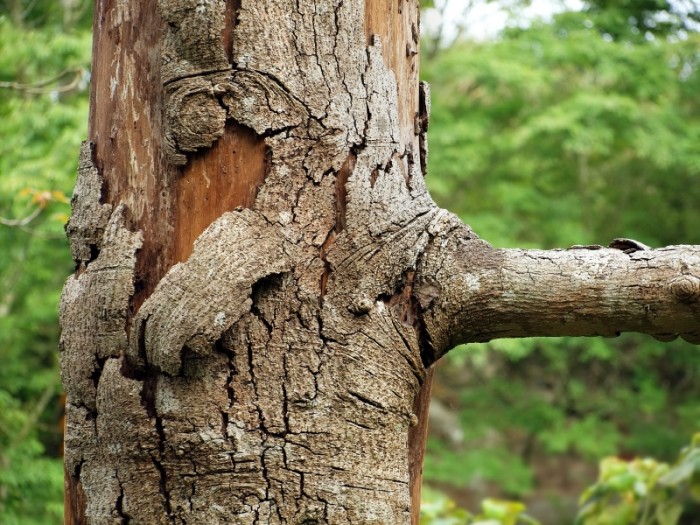
There are a number of different diseases that are fairly common that can affect trees. While some diseases can be treated with various measures, others cannot be controlled. In order to properly control and prevent disease, you need to be able to identify what the disease is. Before attempting to control or eradicate the tree disease, it may be a good idea to contact a local arborist. They may be able to help you not only correctly identify the disease but will have advice on how to treat it. The following are some common diseases that can affect trees throughout the United States.
Sudden Oak Death (SOD)
Sudden oak death was identified in 2000 by scientists in California. It is a canker disease that can affect several different oak species with the most susceptible being the Tanoak. While it has been found to affect more than 100 other species of plant, it is very aggressive in trees. SOD will infect and ultimately kill healthy oak trees. New trees are most susceptible to the disease and it is most likely to strike in moist, cool weather. Because sudden oak death is such an aggressive disease, and can be transferred by spores, it is necessary to quarantine trees that are suffering so that nearby ones are not infected.
Rhizosphaera Needlecast
Rhizosphaera needlecast infects various conifers but is most common on Blue Spruce trees. While a healthy blue spruce will retain its needles for anywhere from five to seven years, the rhizosphaera needlecast disease causes premature needle loss. While it is very rare for rhizophaera needlecast to kill a tree, it does affect its appearance, generally making it unappealing for landscapes. The disease is spread by rain and wind and stressed trees are far more likely to be infected. Most commonly, trees that are over 15 years old are affected.
Anthracnose
There are several species of anthracnose that cause disease in a number of trees commonly used in landscaping. Anthracnose can cause discoloration of leaves as well as dead areas or blotchy tree leaves. These diseases can affect twigs, leaves, buds, and fruit of many different trees. Repeated infections will greatly weaken a tree and make it far more susceptible to attack by other diseases or pests. There are a number of different fungicides that can be used to treat anthracnose diseases.
Black Knot
Black knot is an unsightly disease that infects ornamental and fruit trees, commonly prune and plum trees. It causes lumpy black growths on branches and once a tree is infected if it is not dealt with quickly it can overtake and greatly damage the tree. Black knot is best treated with a combination of tree spraying and pruning but it may take several years of pruning to completely eradicate the disease. There are also several fungicides that can possibly be used for treatment.
Apple Scab
Apple scab is a very common disease among landscape trees such as the crabapple tree. Apple scab generally will not kill a tree but it will weaken it significantly, making it much more susceptible to other diseases and pests. Apple scab will cause leaf loss and will reduce the amount of flowering come the following spring. There are many different varieties of crabapple tree, and while all are susceptible to the disease, some are more so than others. Infected trees will have leaves with brown or olive green spots. The leaves will then turn yellow and fall prematurely. Fungicide is generally considered to be the most effective treatment for dealing with apple scab.
There are many different diseases in addition to the ones listed above that can affect trees and it can be fairly difficult to figure out what one a tree may be suffering from. This can make treatment very difficult as different diseases will require very different treatments. Calling a professional to assist with the problem may be the best course of action.
Common Tree Disease Links
- Tree Diseases, Treatment, Identification, Etc.
- Tree Disease Images and Identification
- Diseases That Affect Tree Bark
- Tree Diseases That Create Hazards
- Disease Management Recommendations for Trees
- Index of Fruit Disease Photographs and More
- Diseases and Disorders of Leaves and Twigs
- Ecology of Tree Diseases
- Identify and Control Noninfectious Diseases of Trees
- How to Identify Pest and Disease Problems
